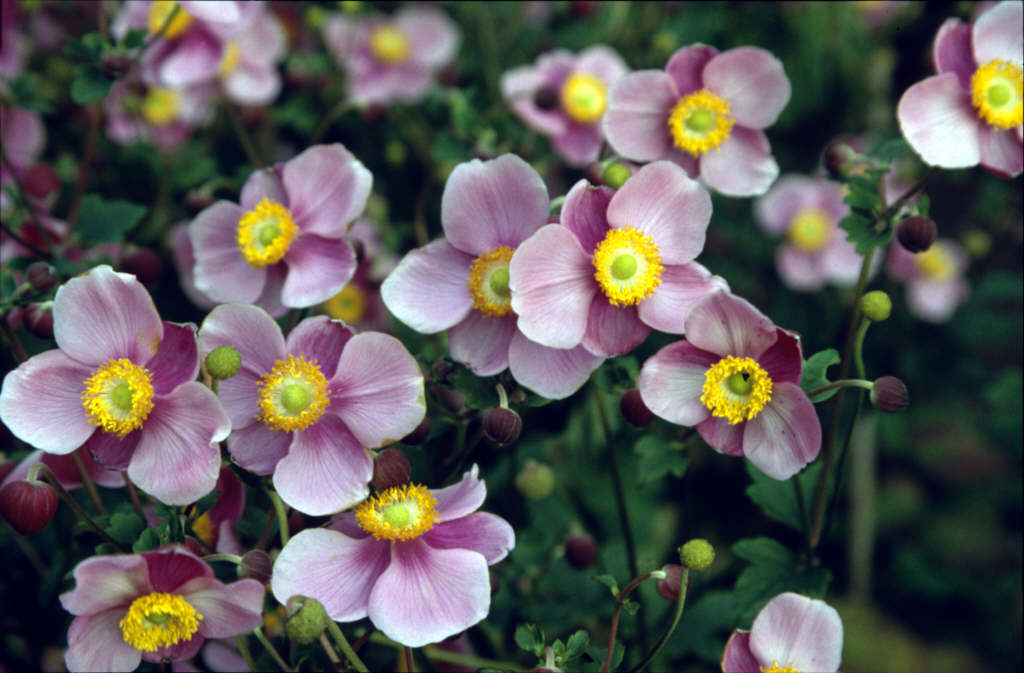Anemone hupehensis 'Praecox'
Japanese anemone 'Praecox'
A clump-forming, spreading perennial, with erect stems bearing 3-parted dark green leaves, and bowl-shaped deep pink single flowers 5-6cm across, in late summer and autumn
Size
Ultimate height
0.1–0.5 metresTime to ultimate height
2–5 yearsUltimate spread
0.1–0.5 metresGrowing conditions
Moisture
Moist but well–drainedpH
Acid, Alkaline, NeutralColour & scent
| Stem | Flower | Foliage | Fruit | |
| Spring | Green | |||
|---|---|---|---|---|
| Summer | Pink | Green | ||
| Autumn | Pink | Green | ||
| Winter |
Position
- Full sun
- Partial shade
Aspect
South–facing or North–facing or East–facing or West–facing
Exposure
Exposed or Sheltered Hardiness
H7Botanical details
- Family
- Ranunculaceae
- Native to GB / Ireland
- No
- Foliage
- Deciduous
- Habit
- Suckering
- Potentially harmful
- Ingestion may cause mild stomach upset, contact may irritate skin. Wear gloves and other protective equipment when handling
- Genus
Anemone are herbaceous perennials with fibrous, rhizomatous or tuberous rootstocks, palmately lobed leaves and saucer-shaped, usually 5-petalled flowers
- Name status
Accepted
How to grow
Cultivation
Will grow in any garden soil but avoid excessive winter wet, dislikes being moved around. Can spread rapidly once established
Propagation
Propagate by division in early spring or autumn, or propagate by root cuttings
Suggested planting locations and garden types
- Cottage and informal garden
- Wildlife gardens
- Flower borders and beds
Pruning
Cut back in late autumn
Pests
May be susceptible to leaf and bud eelworms
Diseases
May be susceptible to powdery mildews
Get involved
The Royal Horticultural Society is the UK’s leading gardening charity. We aim to enrich everyone’s life through plants, and make the UK a greener and more beautiful place.
